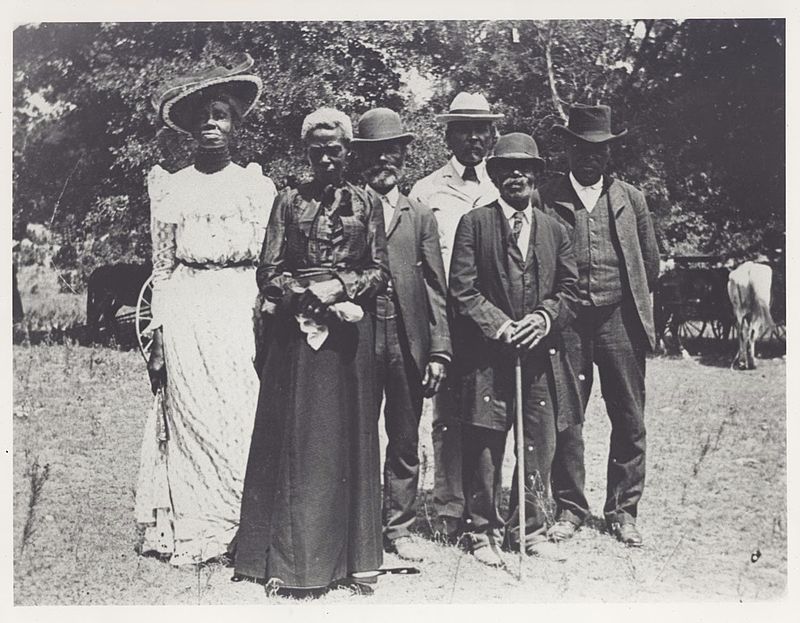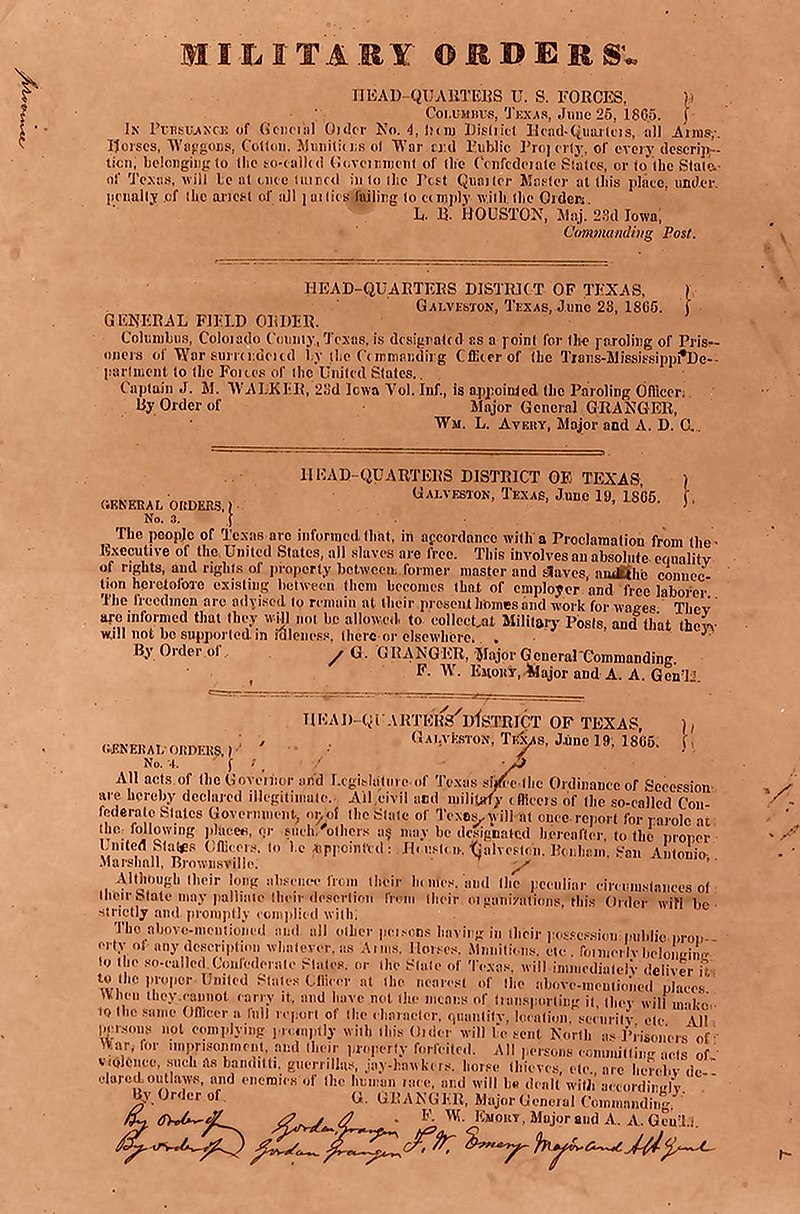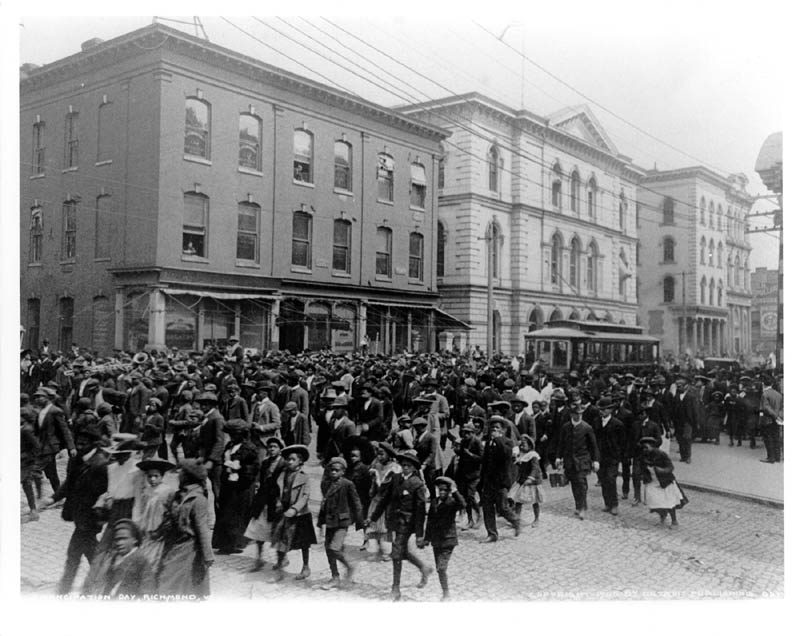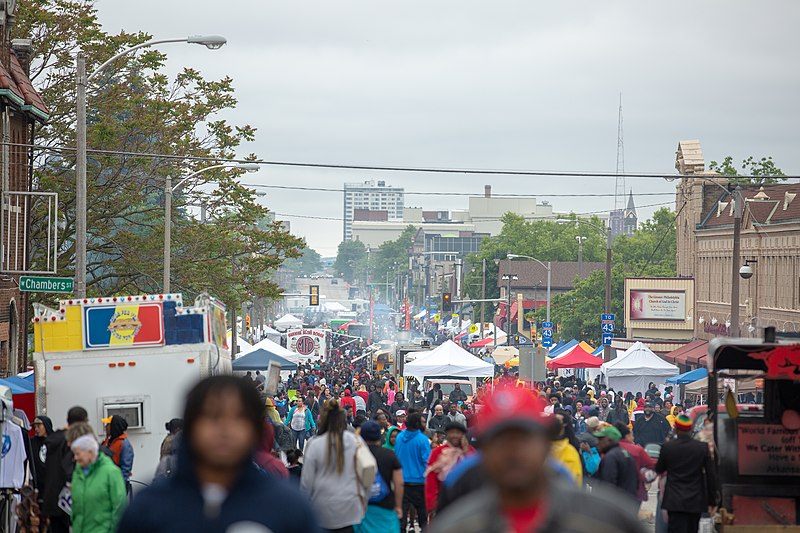Juneteenth, short for “June 19,” commemorates the day in 1865 when federal troops reached Galveston, Texas, to take control of the nation and ensure the freedom of all enslaved people. The troops arrived two and a half years after the Emancipation Proclamation was signed.
Juneteenth commemorates the slavery abolition n the US and is the longest-running African-American holiday. It was recognized on June 17, 2021, as a federal holiday.
Learn more about Juneteenth and its connection to the Lone Star State below.
What Exactly Is Juneteenth?
Every year on June 19, Texas celebrates Juneteenth, also known as “Emancipation Day,” “Freedom Day,” or the nation’s “Second Independence Day.” On January 1, 1863, President Abraham Lincoln issued the Emancipation Proclamation, which ordered the abolition of all enslaved people in the secessionist southern states.
However, freedom wouldn’t come for all enslaved Black citizens until the Union Army won the Civil War. Union troops turned up in Galveston Bay on June 19, 1865, where General Granger declared all enslaved people were free in full compliance with a proclamation from the US Executive.
Scholars argue that the news of emancipation spread more widely and rapidly throughout the nation than is given credit in history books. There is evidence of many enslaved people fleeing to freedom after learning of emancipation, and many of them entering the Union Army to help liberate those still held in slavery. Union General Grant praised and recognized the effectiveness and bravery of the Black Regiments who fought to free their enslaved sisters and brothers.
On June 16, 2021, the Juneteenth National Independence Day Act was passed, making Juneteenth a national holiday for the first time.
The Proclamation of Emancipation
On January 1, 1863, President Abraham Lincoln issued the Emancipation Proclamation, stating that all enslaved in Confederate states in defiance against the Union shall be forever free.
However, the Emancipation Proclamation didn’t immediately free any enslaved people. The proclamation only applied to Confederate-controlled areas, not rebel territories or slave-holding border states already under Union control. As Northern troops moved into the Confederate South, many enslaved people fled behind Union lines.
Slavery and Juneteenth in Texas
Slavery had continued in Texas because there had been no large-scale battle or significant Union troop presence. Many enslavers from outside Texas had moved there, seeing it as a place of refuge for slavery.
When the war ended in the spring of 1865, the arrival of General Granger in Galveston that June signified the end of slavery for Texas’s 250,000 enslaved people. Although emancipation did not occur overnight for all—in some scenarios, enslavers withheld information until after the harvest period—erupted between newly freed Black folks, Juneteenth was born. With the 13th Amendment’s adoption that December, slavery in the US was formally abolished.
On June 19, the year after 1865, freedmen in Texas arranged the first of what would become the annual commemoration of “Jubilee Day.” Juneteenth commemorations in the following decades included music, prayer services, barbecues, and other events. As Black people moved from Texas to other regions of the country, the Juneteenth tradition spread.
Texas was the first to declare June 19 as an official holiday in 1979, and several others followed over the years. Congress passed a resolution in June 2021 designating Juneteenth as a national holiday, which President Biden signed into law on June 17, 2021.
Juneteenth’s Historical Legacy
The first Watch Night services were held on the eve of January 1, 1863, or “Freedom’s Eve.” That night, free and enslaved African-Americans gathered in private homes and churches across the country to await word of the Emancipation Proclamation’s implementation.
All Black people enslaved in the Confederate States were proclaimed legally free at the night’s end. Union soldiers, most of whom were black, paraded onto plantations and through southern cities, reading small printouts of the Emancipation Proclamation and spreading the news of freedom throughout the Confederacy. Only the Thirteenth Amendment abolished slavery in America.
However, not everybody in Confederate territory would be liberated right away. Even though the Emancipation Proclamation became effective in 1863, it couldn’t be implemented in areas still controlled by the Confederacy. As a result, enslaved people in Texas, the westernmost Confederate state, would not be freed until much later.
On June 19, 1865, 2,000 Union troops turned up in Galveston Bay, Texas, ushering in a new era. The army declared that the state’s over 250,000 enslaved black people had been freed by executive decree.
Reconstruction (1865-1877), the post-emancipation period, was a time of uncertainty, great hope, and struggle for the state. Formerly enslaved people immediately sought to reunite families, run for political office, establish schools, advocate for radical legislation, and even sue slaveholders for restitution.
Given the more than 200 years of enslavement, such transformations were nothing short of miraculous. African Americans were empowered and inspired to transform their lives and country not even a generation after slavery ended.
Juneteenth is considered the country’s second independence day. Although it has long been commemorated in the African American community, most Americans are unaware of this historic event.
The historical legacy of Juneteenth demonstrates the importance of never giving up hope in difficult times. The National Museum of African American History and Culture serves as a community gathering place where you can find this spirit of hope. A spot where historical events such as Juneteenth are divulged and new stories are told with equal urgency.
How People Celebrate Juneteenth
After being freed, formerly enslaved people and their descendants would take a trip to Galveston every Juneteenth to celebrate. That tradition quickly spread to other regions, but it was common for white people to prohibit Black people from commemorating in public places, forcing Black folks to get creative.
In one such case, leaders of the Black community in Houston saved a thousand dollars to buy land in 1872 that would be dedicated specifically to Juneteenth celebrations. That land was renamed Emancipation Park, which it still bears.
Nonetheless, Black Americans found a way to keep celebrating and lifting one another. Early Juneteenth celebrations frequently taught newly freed Black people about their voting rights.
Horseback riding and rodeos (check out the San Antonio stock show and rodeo!) were also popular pastimes. Cookouts, church services, parades, music concerts, and other public events are now common Juneteenth celebrations.
Juneteenth is a day to remember the forefathers’ hardships. It demonstrates the survival instinct, how the community creates something out of nothing; it is about hopefulness and empowerment.





